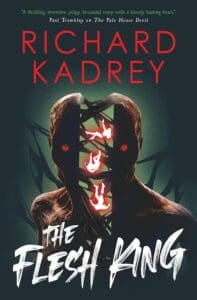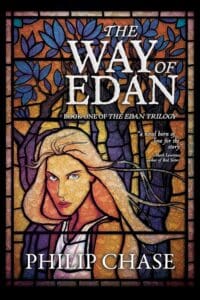Rating: 9.9/10
Synopsis
It is the 18th century and despite the dominant Mughal rule, the Maratha Confederacy has established itself as a force to be reckoned with in the Indian Subcontinent. The fragile peace between the two powers is threatened when Balaji Vishvanath Bhat, Peshwa of the Confederacy, foils the plans of Nizam Ul Mulk of the Mughal Empire, and asserts the power of the Marathas. However, little does the Peshwa know that he has dealt the Nizam an unintended wound—one with roots in his mysterious past and one that he would seek to avenge till his last breath.
When the Peshwa surrenders his life to a terminal illness dark clouds gather over the Confederacy as it is threatened by a Mughal invasion as well as an internal rebellion.
All the while a passive spectator, the Peshwa’s son, Bajirao Bhat, now needs to rise beyond the grief of his father’s passing, his scant military and administrative experience, and his intense love for his wife and newborn son to rescue everything he holds dear. Will the young man be able to protect the Confederacy from internal strife and crush the armies of the Empire all while battling inner demons? Will he live up to his title of Peshwa?
Review
In the year 1627, near Maharashtra in India, the Marathas arose to rebel against the Mughal Empire under their leader, Chhatrapati Shivaji, or Emperor Shivaji. There was more to this conflict than simple black and white politics. Generals betrayed each other and defected from side to side. Governors were sent by Mughal Emperors on the orders to crush the rebellious Marathas. The Marathas would ambush them in forests and jungles, knowing that they could not beat the Mughal forces in open battlefield. There were many reasons why the Maratha lacked the financial status to take them on until a decade later where the Mughals, split and weakened, would give the Marathas the ability to conquer India.
By the time of Shivaji’s passing and under later rulers, the Marathas had expanded and merge their power-base in the Deccan Plains of Western India and would soon pass to dominate most of India until the battle of Panipat in 1761. After that defeat, the Marathas once again expanded into North India and soon became the dominating power once again until the British fought wars with them where they had been expanding from Bengal. They fought three wars against the Marathas, with the Duke of Wellington taking part in these conflicts who Napoleon would refer to him as the ‘sepoy general’.
Expanding on this subject would consume an entire history volume and that is not the purpose of this review. This background gives you an idea of what the background for this novel is. This is Indian historical fiction I believe at its finest. It’s not flawless and suffers from some areas of editing and odd phrases, which in Indian English differs completely from the native English that is spoken in the West. You will words like laud and ballad used more often that would be used in a fantasy novel, for example. So when you read this novel, consider this as a warmup. I also would recommend you to read the glossary first, which is located at the end of the novel. Reading that will help you become familiarised with the terminology of the Marathas and the Mughals.
I have read a few novels based on India, but none surpasses the technical and lavish descriptions of Ram’s descriptions. You will be taken to exotic palaces, you will see the royal court of the Mughal Emperor, the houses of Dehli, you will see the capital of the Marathas, the power struggles of the Nizam against the newly appointed Peshwa, Bajirao. The Peshwa was the term of Prime Minister for the Marathas, with the Emperor ruling as the overall head of state.
This story has some fine action sequences, and you will be immersed into the breath-taking battle scenes and the scenes of devastation. Ram has built an excellent background for this with plenty of research. This story is about two fathers. One young and one old. The Peshwa, Bajirao Rao, who under his previous father, Balaji Vishwanath had led an expedition to Dehli to free Shivaji’s son, Sambhaji’s mother Yesubai. When Sambhaji had been captured by the Mughals, he had been tortured as was the brutal custom of warfare of that time. The most ironic situation is that the Bajirao’s father freed Yesubai, as the historical legend goes, and that the Marathas were able to maniuplate the Mughal throne through the use of proxies. The Marathas became the most powerful Empire of its time.
The Nizam-ul-Mulk is a legendary figure in the history that is documented. Much of the names I am referring to are prevalent in the history of the Marathas and in India. Peshwa Bajirao Rao would become to become the most brilliant strategist of his time. There are many legends and stories to be told about him, but many comparisons have been made to Napoleon, over the fact that he won more victories in his lifetime than defeats. He was a figure that dominated India and his stories are still told in the state of Maharashtra even today. This novel focuses on the first campaign of the Peshwa when he was still young. Where the Nizam leads an army into Maratha lands.
The Peshwa would win this battle and then go to not only fight the Mughals, but the Portuguese in Goa as well. There are so many characters involved in this story that you will find it a bit confusing. So my best advice is to stick with the Peshwa, Bajirao, and the Nizam. All the other characters will then make sense. But watch out for Kashibai, Bajirao’s wife. There are some particuarly good scenes with her and I wished we had more of her involvement. But there is a good reason why I say to watch out for her. The way the prose has been written is awesome. The research impeccable. And the Nizam who is the major antagonist has been written in such a superb way that you feel sympathy for the man. There is a prologue but it is short. It sets the entire foundation for the rest of the story.
Most of the novel concerns the young Peshwa against the cunning Nizam. There is so much display of political intrigue and cunning between the two figures you will eventually figure out this story for yourself. It is very easy to read, but read the glossary first. Also, you find that there are a lot of illustrations used in the book. Now in Western fantasy publishing, you get some illustrations but they are mostly in special editions. In historical fiction, there isn’t any. This book has it. India’s wide publishing market has been growing for, so consider that there are plenty of authors out there that have different elements of style, and the publishers also might have different requirements. I would love Historical Fiction books to have illustrations, however. Personally, I’ve wished for something like this.
Please also note that everything is my opinion, and I am not a historian regarding the facts represented, it is what I have gathered and to even talk about it would require a massive historical book by itself. I would definitely say if you want to read historical fiction based on India, then this is a good starting place. You will travel to an India that differs completely from what it shows today. You will visit palaces, travel to exotic forests, explore exotic battlefields, and see so much stuff that it will bewilder you. Give this a try.
There are also some movies on the Marathas. One in particular, Bajirao Mastani gives a sort of introductory founding as well. But give this book a try first.
Some links:
https://en.wikipedia.org/wiki/Baji_Rao_I
https://en.wikipedia.org/wiki/Maratha_Empire
https://en.wikipedia.org/wiki/Nizam-ul-Mulk,_Asaf_Jah_I





Leave a Reply